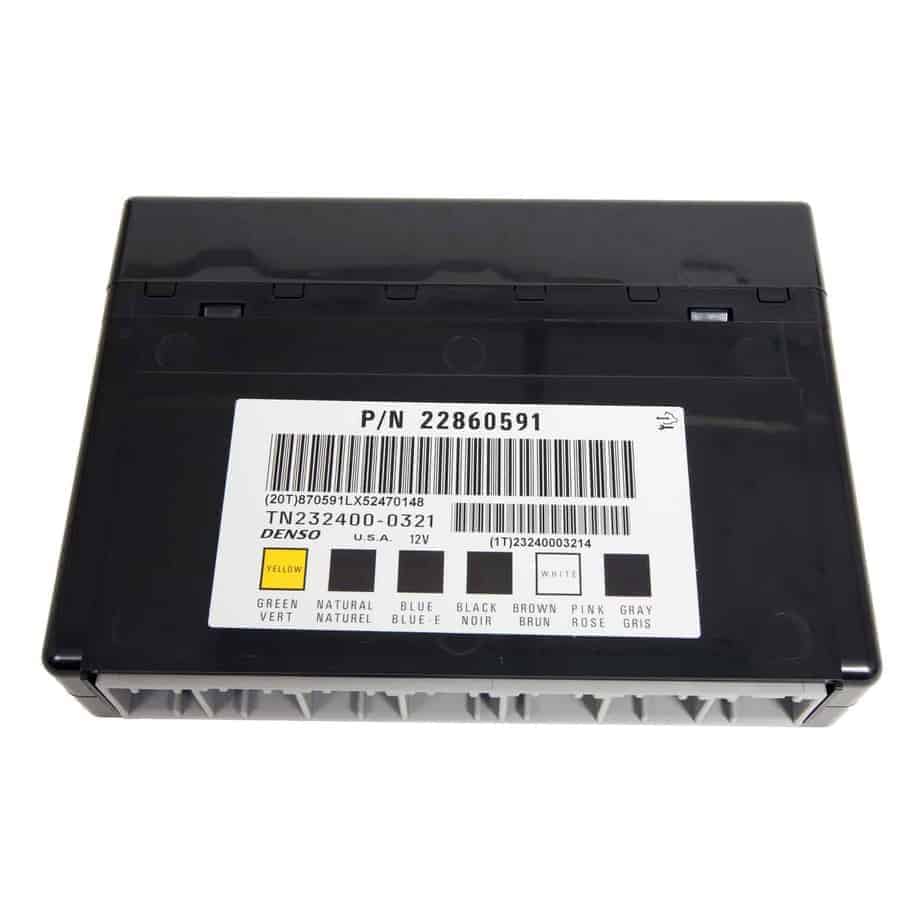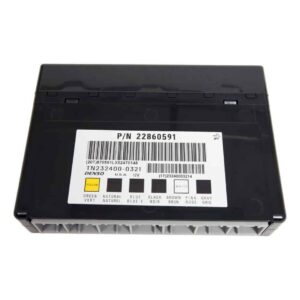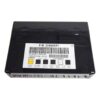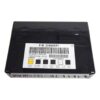Restore Control and End Electrical Frustration in Your GM Vehicle
Are you battling a vehicle that seems to have a mind of its own? Flickering dash lights, power windows that won’t cooperate, a security system that randomly activates, or a battery that’s dead every morning? As a technician with over two decades of diagnostic experience, I’ve seen these exact issues hundreds of times. More often than not, the culprit is a failing Body Control Module (BCM). This isn’t just an inconvenience; it’s a breakdown in your vehicle’s central nervous system, affecting comfort, safety, and reliability.
This isn’t just another part. This is a complete, ready-to-install solution. We take a high-quality replacement GM Body Control Module and program it specifically to your vehicle’s VIN using the latest GM software updates. This critical step ensures that the module communicates flawlessly with your vehicle’s other computers, just as it did from the factory. You get a reliable fix that restores full functionality without the exorbitant cost and hassle of a dealership visit for programming.
A Technician’s Notebook: The Phantom Battery Drain
I once had a 2008 Chevy Impala in my bay that had its owner at his wit’s end. He’d replaced the battery three times in six months. Other shops told him it was the alternator or a bad ground, but the problem persisted. After connecting my diagnostic scanner and monitoring the data stream, I noticed the BCM wasn’t allowing certain networks to go to ‘sleep’ after the key was off. It was causing a slow, persistent parasitic drain. We swapped in a VIN-programmed BCM, and the problem vanished instantly. It’s a classic example of how a faulty GM Body Control Module can mimic other, more common failures.
Is Your GM Showing These Signs of BCM Failure?
A failing BCM can cause a wide range of confusing symptoms. If you’re experiencing any of the following, this module is likely the solution you need:
- ✔ Erratic or non-functional power windows, door locks, and interior/exterior lights.
- ✔ The security or anti-theft system light stays on or prevents the car from starting.
- ✔ Dashboard gauges behaving strangely or not working at all.
- ✔ Communication error codes, such as U0140, U0155, or other U-series codes.
- ✔ Unexplained parasitic battery drain that kills your battery overnight.
- ✔ Horn honking unexpectedly or not working when pressed.
- ✔ Remote keyless entry (RKE) system is inoperative.
Your Straightforward BCM Installation Guide
Installing your pre-programmed BCM is a manageable job for a confident DIYer. While the exact location varies by model (check the fitment list), the general process is similar. Always disconnect the battery before you begin.
- Safety First: Disconnect the negative terminal from your vehicle’s battery and secure it away from the post to prevent accidental contact.
- Locate the BCM: Find your old BCM. Common locations include under the driver’s side dash near the steering column, behind a kick panel, or in the center console area.
- Disconnect and Remove: Carefully unplug the electrical connectors. They have locking tabs that need to be depressed. Once disconnected, unbolt or unclip the old module from its mounting bracket.
- Install the New Module: Mount your new, pre-programmed BCM in the same location. Reconnect all electrical connectors firmly until they click into place.
- Reconnect Power: Reattach the negative battery terminal. The vehicle may run through a self-check sequence.
- Perform Final Checks: Start the vehicle and test all body functions—lights, locks, windows, radio, etc. Note the post-installation procedures below, as some relearns may be necessary.
Important Post-Installation Information
Because this GM Body Control Module is central to many systems, a couple of additional steps may be required after installation to ensure everything works perfectly:
- ✔ Airbag System Sync: If your airbag/SRS warning light is illuminated after installation, a ‘Setup SDM Primary Key in BCM’ procedure must be performed. This requires a professional-grade scan tool to sync the new BCM with the airbag system. This is only needed if the light is on.
- ✔ Brake Pedal Position Relearn: On some models, a brake pedal position sensor recalibration might be necessary for proper brake light and traction control operation. This can often be done with a capable bidirectional scan tool.
- ✔ No Core Charge: You are not required to return your old BCM. There is no core charge or deposit associated with this purchase.
Disclaimer: Vehicle systems vary. For procedures specific to your exact model, always consult a factory service manual or a certified automotive technician.
Verified Compatibility for Your Vehicle
This module is a direct replacement for a wide range of GM vehicles and supersedes multiple part numbers, ensuring a perfect match. Please confirm your vehicle is on this list. This module replaces part numbers: 10382479, 15093910, 15276271, 15299986, 15819552, 15828601, 15837419, 15872388, 15872421, 15880684, 15921352, 15921353, 15948438, 15948439, 20815898, 20839063, 20864767, 20864768, 20921435, 20921436, 20935349, 22860591, 25826124, 25826125, 25847588, 25847589, 25892622, 25910474, 25934762, 25934763, 95151084.
AVALANCHE 1500 10 (under steering column), ID 25892622
CAPRICE 11-13
CAPTIVA SPORT 12 (center dash), ID 20921435, 20921436, or 22860591
CTS 08 (RH dash)
CTS 08-13 (LH dash)
DTS 06-11 (RH center dash)
ENCLAVE 08-12 (LH dash)
EQUINOX 07-09 (center dash)
ESCALADE 10 (under steering column), ID 20815898 or 25892622
ESCALADE ESV 10 (under steering column), ID 20815898 or 25892622
ESCALADE EXT 10 (under steering column), ID 25892622
EXPRESS 1500 VAN 08-12 (center dash)
EXPRESS 2500 VAN 08-09 (center dash)
EXPRESS 2500 VAN 10 (center dash), 4.8L, 6.0L, or 6.6L (LMM)
EXPRESS 2500 VAN 11-12
EXPRESS 3500 VAN 08-09 (center dash)
EXPRESS 3500 VAN 10 (center dash), 4.8L, 6.0L, or 6.6L (LMM)
EXPRESS 3500 VAN 11-12
G8 08-09 (center dash)
HUMMER H2 08-09 (LH firewall)
IMPALA 06-12 (LH dash)
IMPALA 13 (LH dash), ID 22820315
LUCERNE 06-11 (right side dash)
MONTE CARLO 06-07 (LH steering column)
OUTLOOK 07-10 (center dash)
SAVANA 1500 VAN 08-12 (center dash)
SAVANA 2500 VAN 08-09 (center dash)
SAVANA 2500 VAN 10 (center dash), 4.8L, 6.0L, or 6.6L (LMM)
SAVANA 2500 VAN 11-12 (center dash)
SAVANA 3500 VAN 08-09 (center dash)
SAVANA 3500 VAN 10 (center dash), 4.8L, 6.0L, or 6.6L (LMM)
SAVANA 3500 VAN 11-12
SRX 07-09 (LH dash)
STS 10 (center dash)
SUBURBAN 1500 10 (under steering column), ID 20815898 or 25892622
TAHOE 10 (under steering column), ID 20815898 or 25892622
TORRENT 07-09 (center dash)
TRAVERSE 09-12 (LH dash)
VUE 08-10 (center dash)
YUKON 10 (under steering column), ID 20815898 or 25892622
YUKON XL 1500 10 (under steering column), ID 20815898 or 25892622
Do I need to do any programming myself?
Do I need to do any programming myself?
No. We handle all the programming before we ship the module. Simply provide your vehicle’s 17-digit VIN during checkout, and we will flash the BCM with the latest GM software specific to your car or truck. It will arrive ready for installation.
Is this a simple plug-and-play installation?
For the most part, yes. The module itself is physically plug-and-play. However, as noted above, some vehicles may require an ‘Airbag System Sync’ or ‘Brake Pedal Position Relearn’ with a professional scan tool to clear warning lights and ensure full system integration.
What if I install it and still have problems?
While this BCM resolves the vast majority of related electrical issues, it’s important to ensure the root cause was properly diagnosed. A faulty BCM can be caused by or mimic other issues like bad wiring, poor grounds, or shorts in other components. We recommend a thorough diagnosis if problems persist.
Do I have to return my old BCM?
No, there is absolutely no core charge for this part. You can keep your old module, which can be helpful for comparison or if you ever need to reference the original part number sticker.
How do I find my vehicle’s VIN?
Your 17-digit Vehicle Identification Number (VIN) can be found on your vehicle’s registration, insurance card, or on a small plate on the driver’s side of the dashboard, visible through the windshield.



